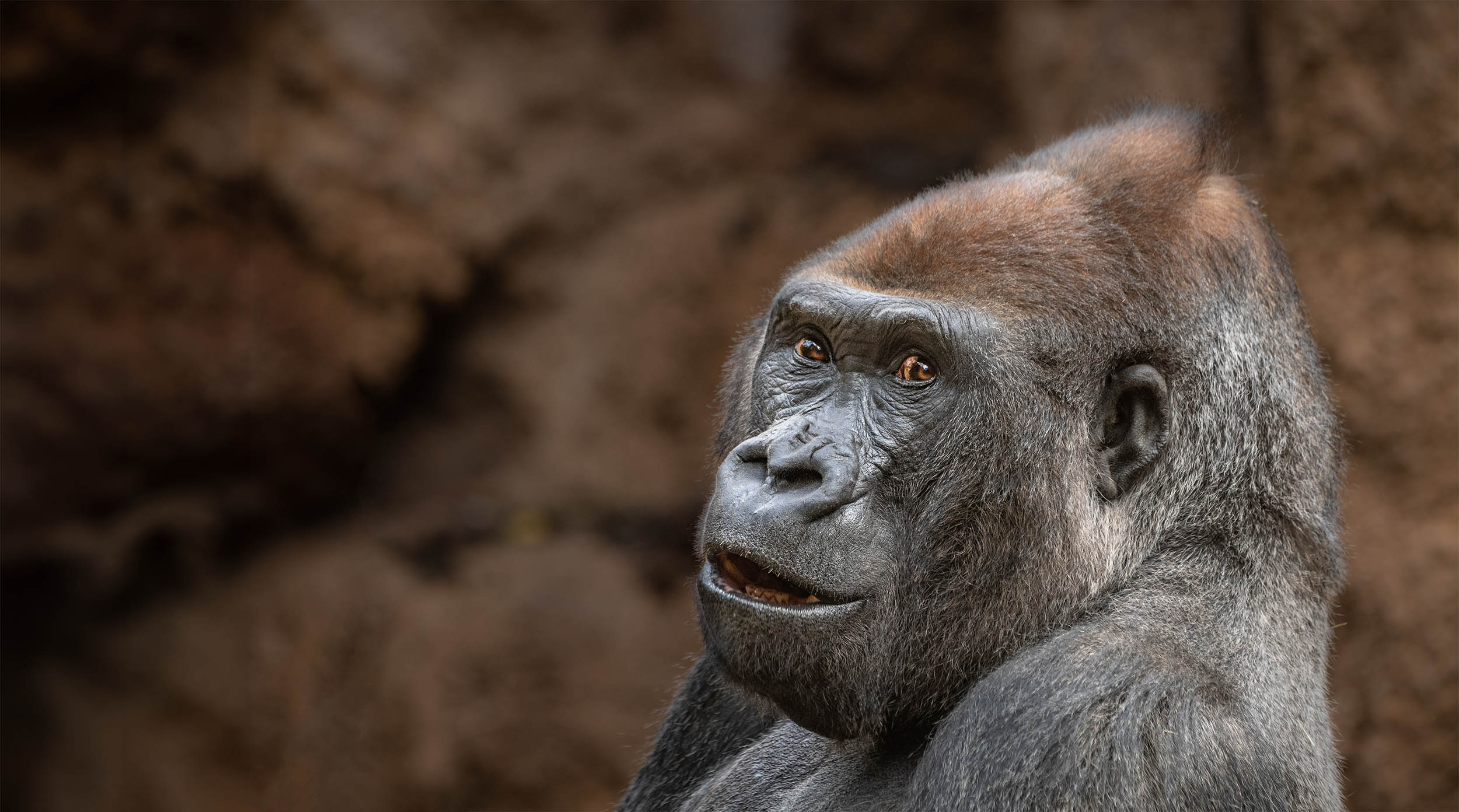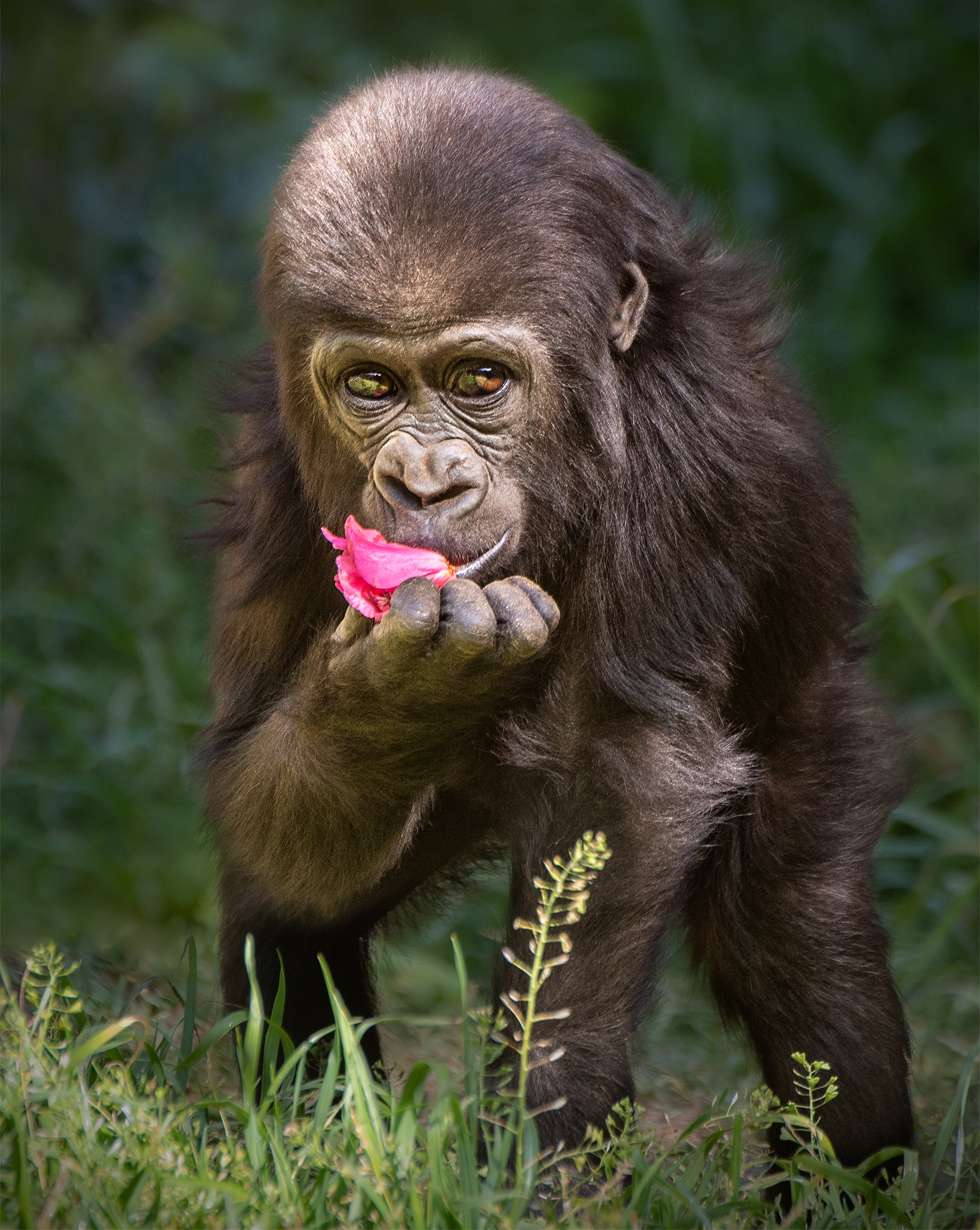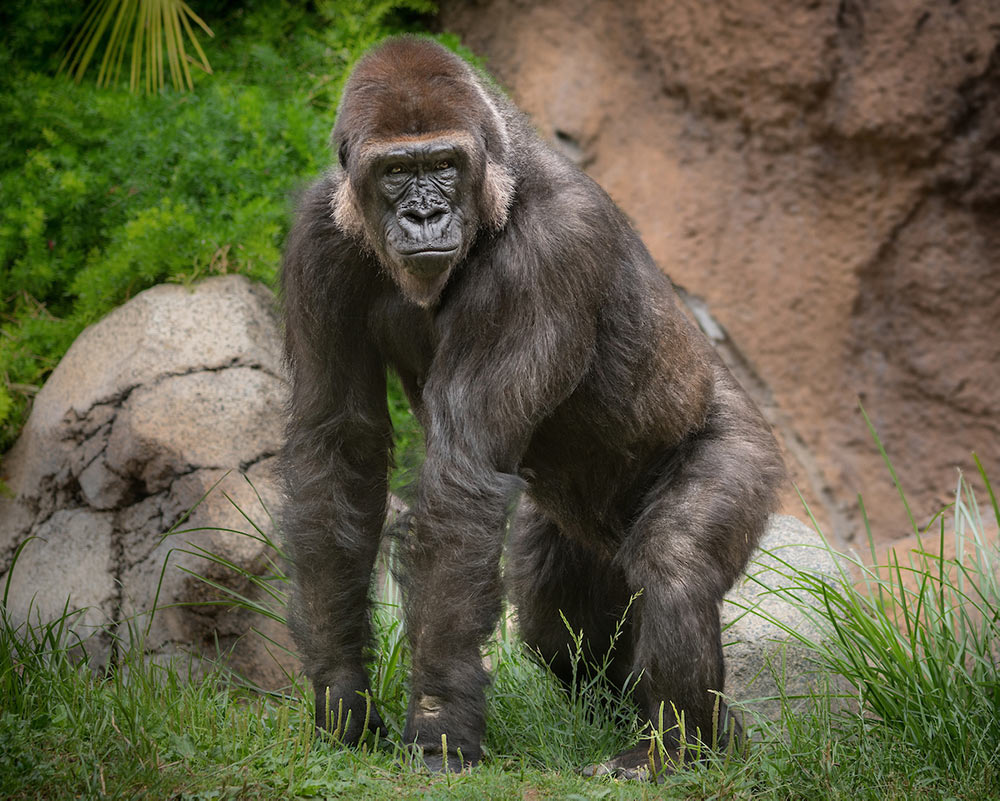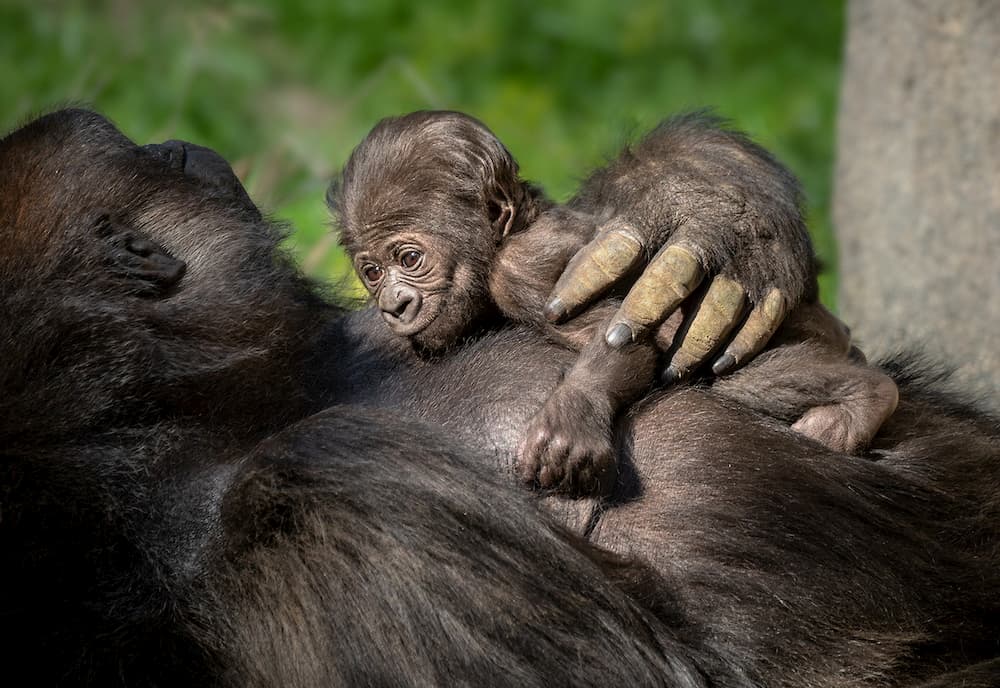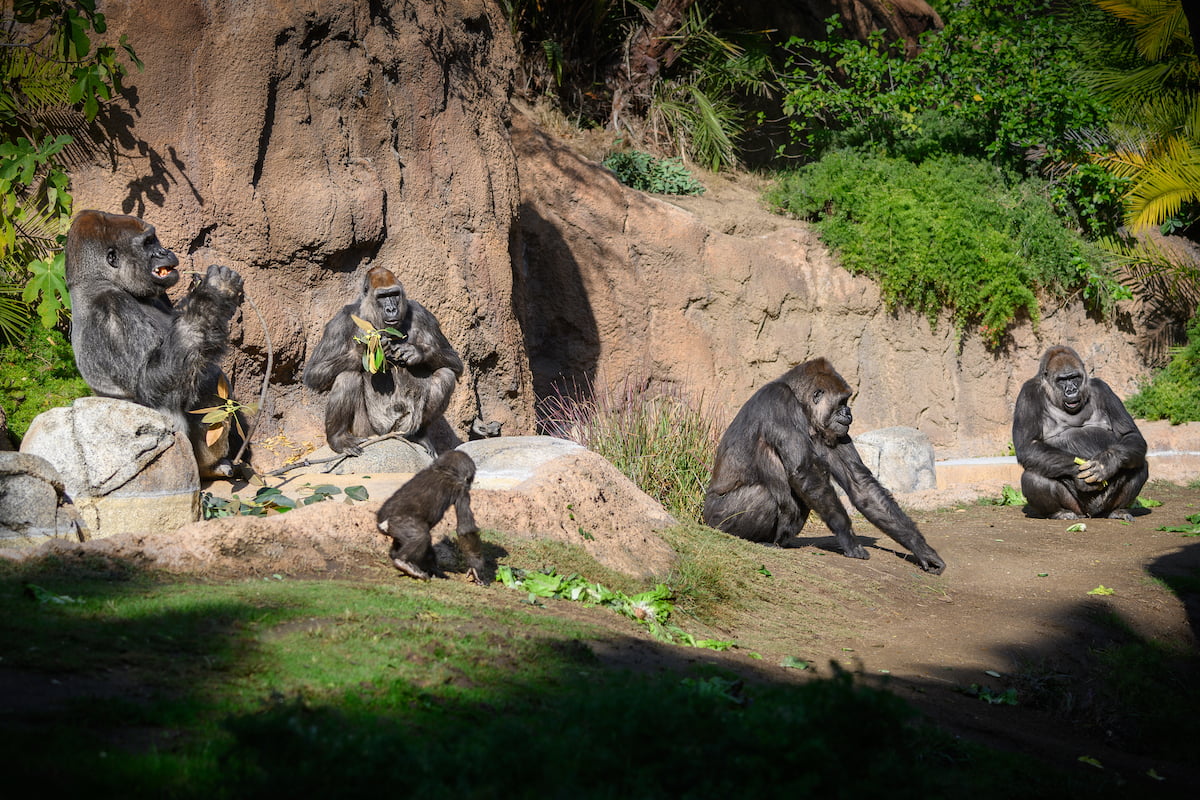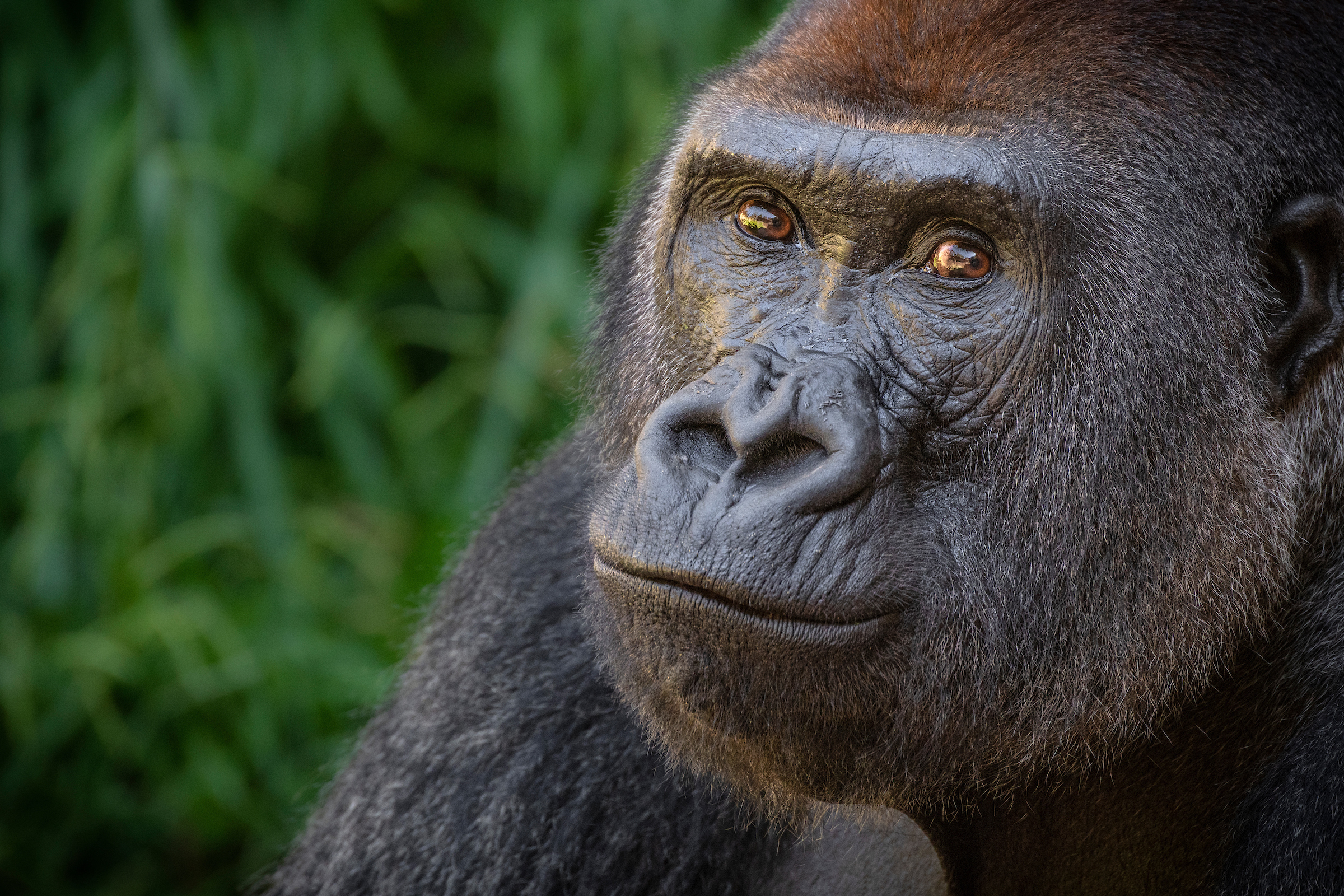About
Gorillas are the largest, most powerful of the great apes, a primate group that also includes chimpanzees, bonobos, and orangutans. They share about 98 percent of their DNA with humans. For the most part, they live quiet, peaceful, and non-aggressive lives. Families are led by a dominant male called a “silverback,” referring to the silver hair on his back, and include several females, infants, younger males, and juveniles. The silverback’s job is to protect his family, so when gorilla troops meet, rival males can display aggression. Males may beat their chests, charge at one another, scream, bark, or wave sticks. They are capable of attacking and they are very strong. New studies have revealed that gorilla troops with overlapping territories sometimes meet up peacefully. It is thought these gorillas may be related or know each other from past encounters.
Females typically give birth to one infant after a gestation period of eight to nine months. At around three to four months of age, the infant rides on the mother’s back and will do so until weaned (around four to five years of age); at six to seven months, the youngster walks and climbs independently. Mature females leave their natal groups for other troops or single silverbacks. Juvenile males may live alone or in bachelor groups until they meet females and form their own troops. An adult male gorilla aged 10–12 years, begins to develop silver hair on his back, signaling his maturity.
During the day, gorillas forage for food. They “knuckle-walk” using their front knuckles and back feet. They spread out but keep in touch using a quiet call known as belch vocalization. Although they can climb trees, they spend most of their time on the ground. Each night, they sleep in new nests built on the ground (larger males) or in trees (juveniles and lighter females). Wild gorillas have been observed using rocks and sticks as rudimentary tools. In Africa, gorilla habitats are being destroyed by the mining of minerals that are used in the manufacture of handheld electronic devices. When you recycle your devices at the Zoo through our partner ECO-CELL, you are helping to reduce the demand for these minerals, as well as keeping toxins out of the environment.


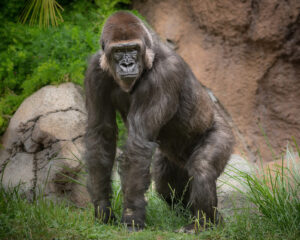



Habitat
These gorillas are found in the lowlands and swamp forests of Cameroon, Central African Republic, Equatorial Guinea, the Democratic Republic of the Congo, Gabon, and Angola.
Diet
Gorillas are primarily herbivorous, eating leaves, bark, vines, and stalks, as well as fruit. They may occasionally ingest insects along with the vegetation that makes up most of their diet.
Physical Characteristics
Western lowland gorillas are four to six feet tall and weigh from 155 to 420 pounds. Males may be twice as large as females. Lifespan is 35 to 50 years.
location within the zoo
You’ll find this animal at Campo Gorilla Reserve. See the pink section on the Zoo Map.
Say Hello to Angela!
In 2020, we were delighted to welcome Angela, the first gorilla born at the L.A. Zoo in more than 20 years. To see her in action, view the video below or go to the “Angela the Gorilla” YouTube playlist.
Angela is one of the stars of a new book published by Blue Sneaker Press. Angela & Lulingu: Two Gorillas, A World Apart tells the story of her early days and her role as ambassador for her species.
Meet Our Gorillas
The Los Angeles Zoo is home to seven Western lowland gorillas, living in two groups.
Family Group
Kelly

The term “gentle giant” truly applies to Kelly, the silverback of the family group. Kelly was born at the Los Angeles Zoo in April 1987. Ever vigilant, he is the perfect troop leader and a caring father. He spends quality time with Angela, always keeping a watchful eye on her.
Rapunzel
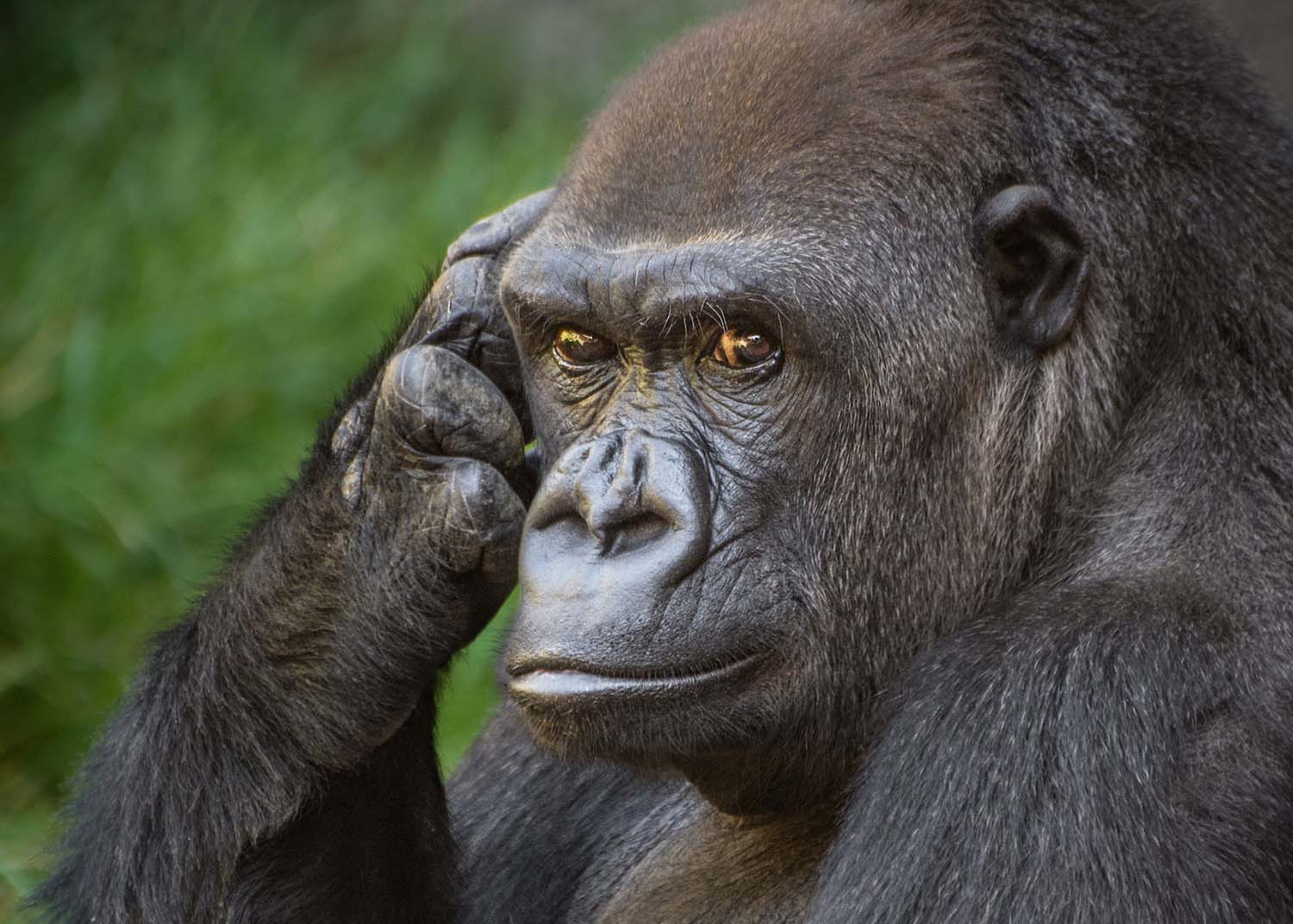
Rapunzel was born at the Cincinnati Zoo in 1984 and transferred to the L.A. Zoo in 1988. Rapunzel has had two offspring of her own, so she’s a great teacher to Angela and takes her “auntie” responsibilities seriously. Sweet and nurturing, she is often the mediator when there is tension between other group members.
N’djia
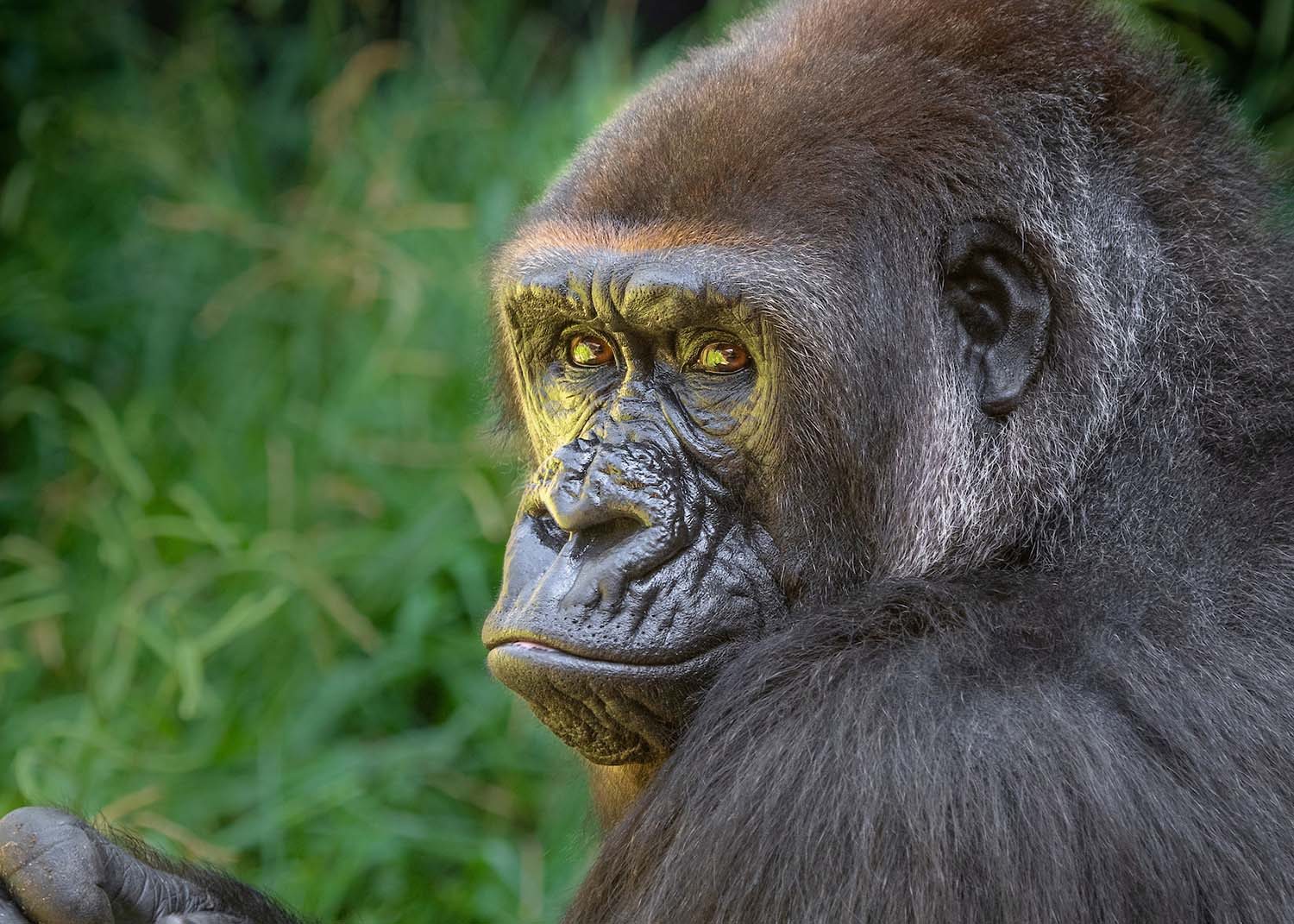
N’djia was named after a village in Cameroon. Born at the San Diego Zoo Safari Park in 1994, she moved to the Los Angeles Zoo in 2018. Her first offspring, Angela, was born in 2020. N’djia is teaching her daughter independence but is always there when Angela needs maternal guidance.
Angela
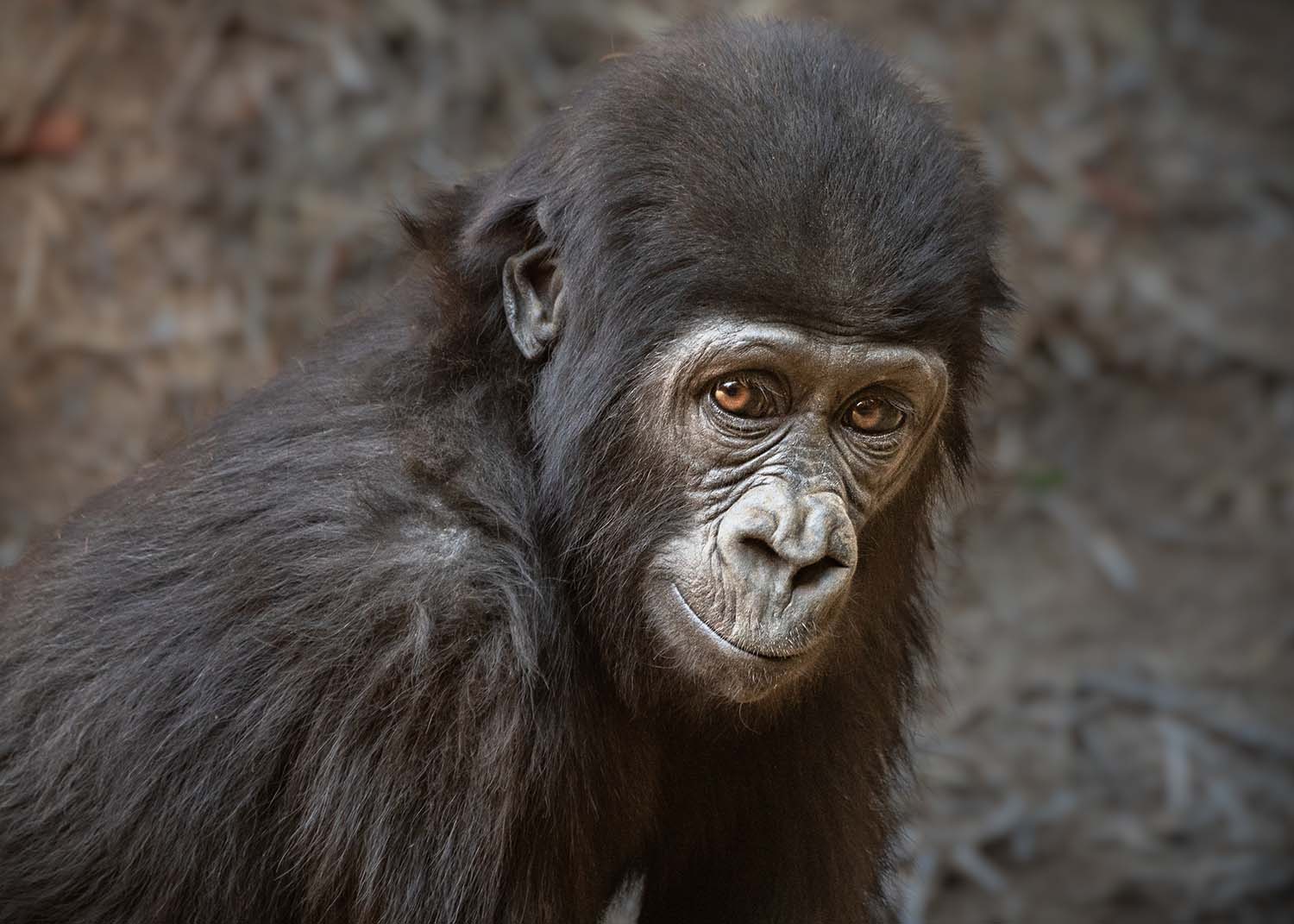
Born at the L.A. Zoo on January 18, 2020, to parents N’djia and Kelly, Angela has developed a charming personality. Quite the crowd pleaser, she is playful, inquisitive, and almost always on the move. She is constantly learning from her troop members.
Bachelor Group
Hasani
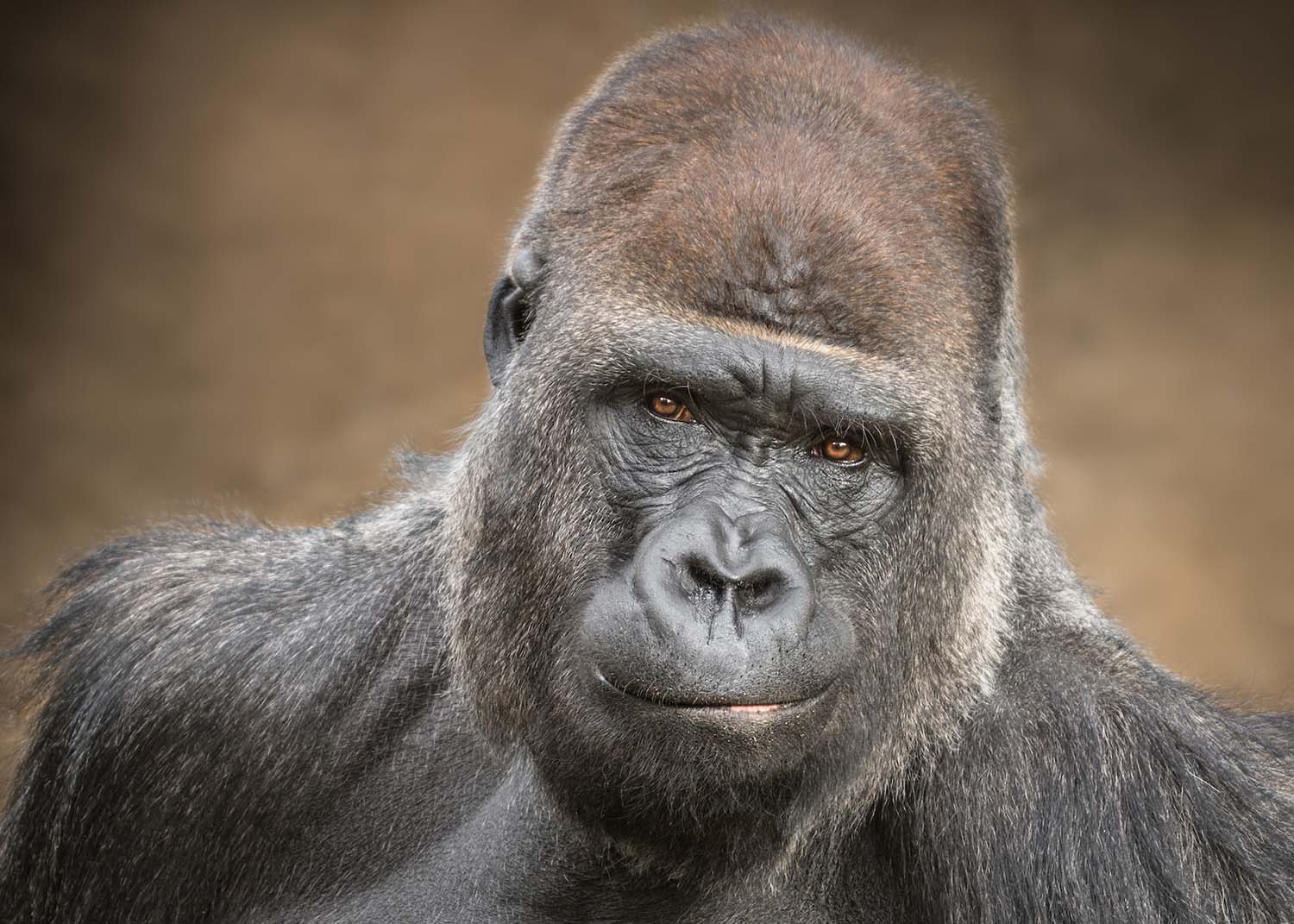
Hasani means “handsome” in Swahili, and this good-looking gorilla lives up to his name. Born in 1994 at Chicago’s Lincoln Park Zoo, Hasani is the older brother to Jabari. Hasani is the more serious of the Zoo’s bachelors. He takes on the role of the dominant male, keeping both Jabari and HJ in line when needed. He can be stubborn at times but has a sweet disposition and is a favorite among keepers.
Jabari
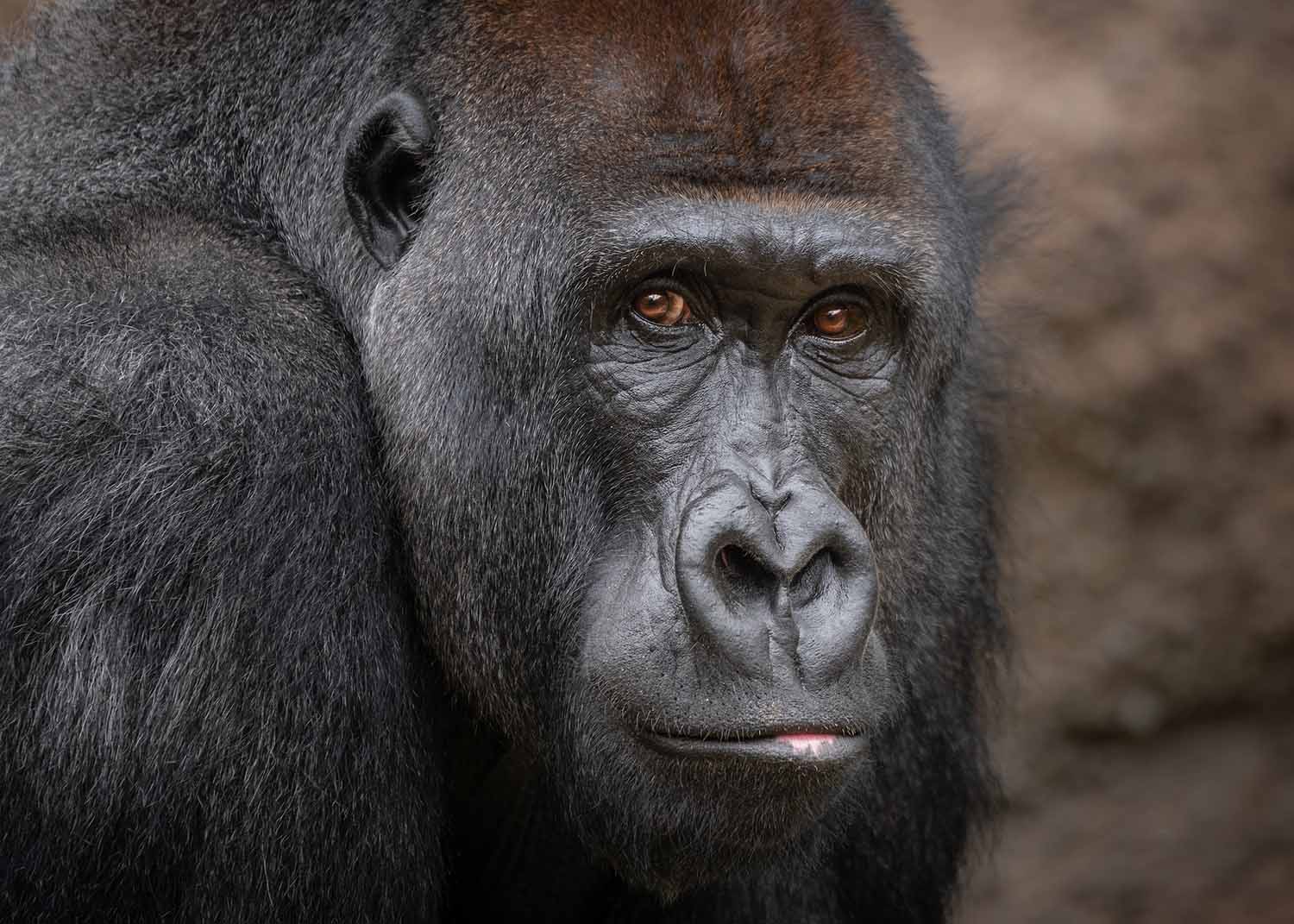
Jabari (which means “fearless” in Swahili), is more outgoing and curious than his big brother, Hasani. Jabari was born in 1997 at Disney’s Animal Kingdom in Florida. Living up to his name, he has overcome many obstacles over the years. Jabari enjoys having a younger playmate and can often be seen chasing and playing with HJ.
HJ
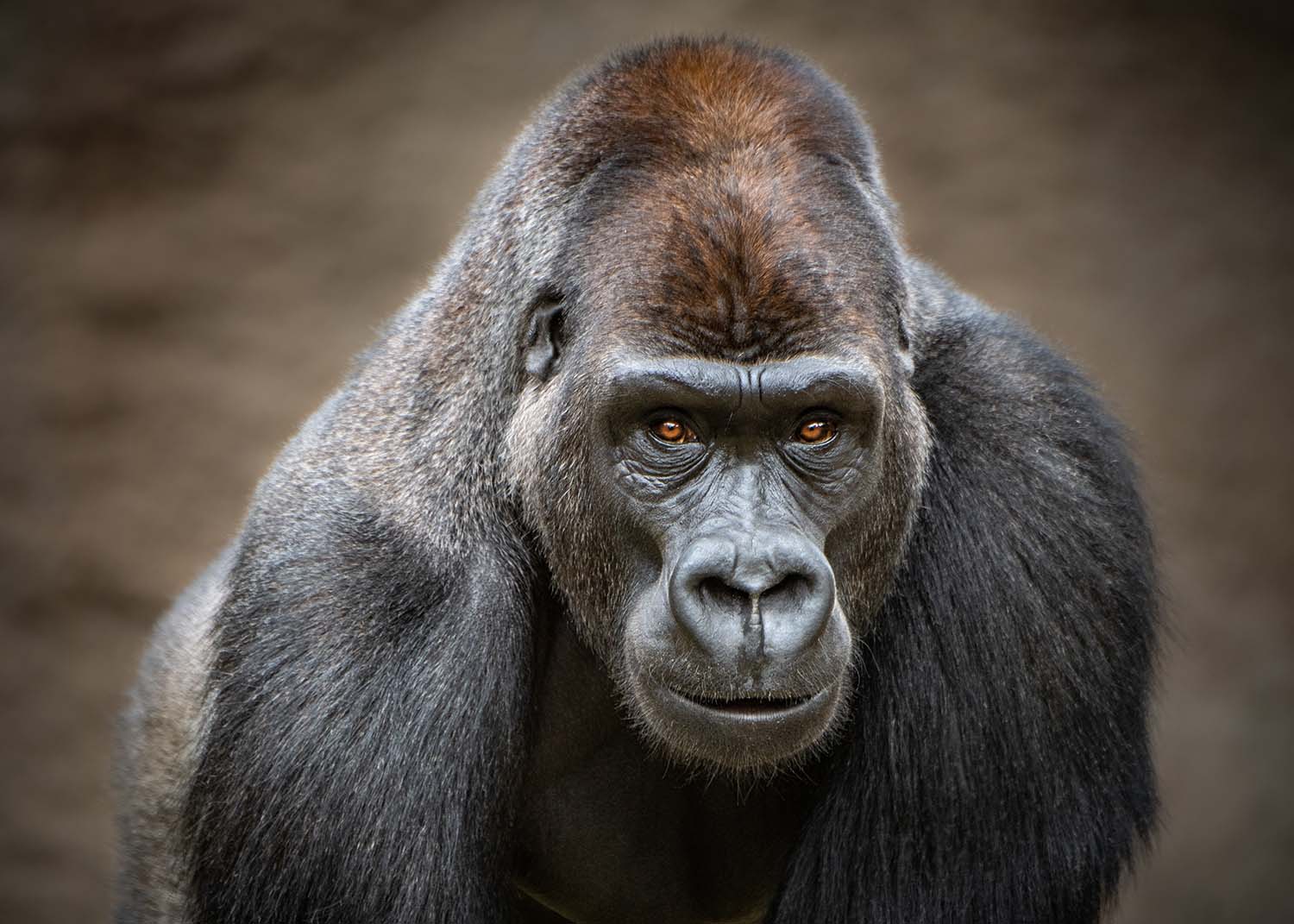
HJ was born in 2008 at the San Francisco Zoo and arrived at the L.A. Zoo in November 2019. His name at the San Francisco Zoo was Hasani, so when he moved here, he was nicknamed HJ (for “Hasani Jr.”) to avoid confusion with our older bachelor, Hasani. HJ is growing into quite the young silverback. Sometimes mischievous, he is building bonds with Hasani and Jabari while figuring out his role in the bachelor group.

